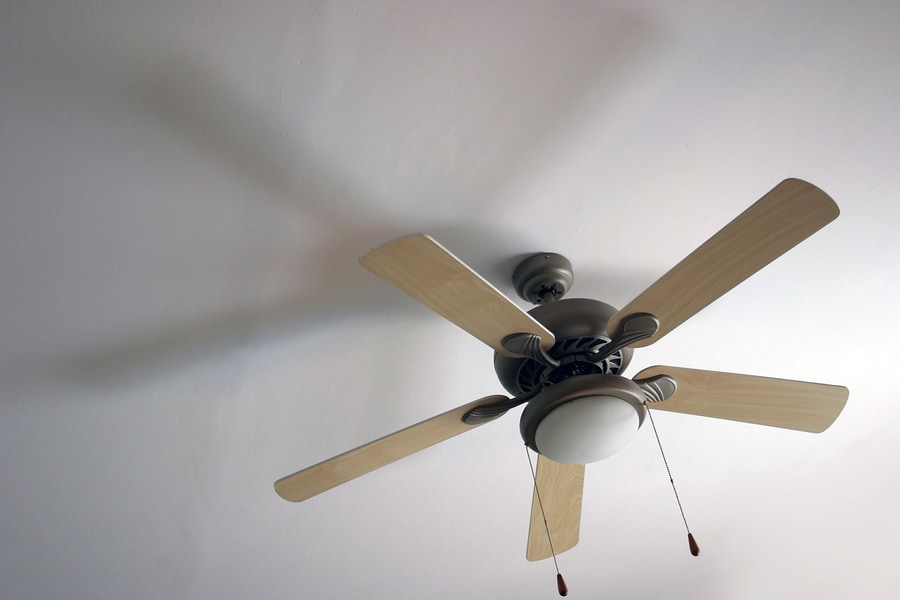Ceiling Fans Energy (and Money) Saving Hacks
It’s not quite “Summer-y” these days, yet we’re not living in “Game of Thrones” world of fantasy either. Winter’s not going to stay forever! So, better prepare for the scorching heat right now, especially when it’s about essential stuffs, like ceiling fans.

How your utility bill shoots in summer when you’re left with no choice than to turn on your air conditioners. While paying your bills, you’d definitely realize that things would have been different had you replaced your old ceiling fan with a new one. It’s a ground reality.
Ceiling Fans Are Eco-Friendly
Ceiling fan saves loads of energy and hundreds of dollars each month. Do you know how much? Here’s a simple statement:
“If normal AC unit consumes 3,500 watts in a certain period of time, a normal ceiling fan takes just 60 watts”
It’s 1.71% of the energy consumed by AC. To make it simpler, a central AC consumes as much energy as 58 full-size ceiling fans would.
Here are some rather interesting facts
- Your ceiling fan can make your room 7 degrees cooler, through its impressive “wind chill” effect.
- A higher thermostat can reduce your air conditioning bills up to 40%
- A higher thermostat saves up to 10% of the heating cost
Then there’s more to it if you go deep into the mechanism and understand how it works.
How Do Ceiling Fans Work?
Default movement of the ceiling is meant to cool the room as follows:
- The hot air stuck beneath the ceiling can circulate
- Circulation helps the air to cool down
- The cooler air becomes heavy and comes down onto the floor.
You can see: How a Ceiling Fans Works
4 Simple Ceiling Fan Hacks to Save Energy
Here are some simple tips to save energy and cut down your utility bills through efficient use of ceiling fans:
#1: Adjust the Direction and Run Your Fan High during in Summer
High performance ceiling fans can rotate in either direction – clockwise and counterclockwise. It depends upon the blade construction and alignment which direction is appropriate for the season. However, most fans rotate counterclockwise to blow the spread the air down.
A simple way to find out which direction would work is, by standing underneath the running fan. If you feel the breeze coming down, that’s the direction for summer. You can change directions with the help of a button or switch available near the fan-base.
During summer, it is recommended that you should run your ceiling fan on high and the air should be blown below the fan. This way, you room cools down quickly.
#2: Low Speed in Opposite Direction During Winter
Change your fan’s direction in winter. Make sure that the fan operates at the lowest speed.
- The construction of fan blades will help move the cooler air up from the floor
- The pulled up air mixes with air hot air just below the ceiling and comes down near the walls.
This air circulation makes the room temperature higher than normal. You can feel the warmth of the breeze blowing over you, by standing near the wall.
#3: Set Your Thermostat Higher
In hot summer days, set your thermostat to high temperature and run your ceiling fans constantly throughout the day. Your ceiling fan can circulate the cool air throughout the house. The high volume of air makes it possible for the fan to create “breezy effect”, making you feel a cooler than actual temperature of the room.
#4: Switch Off the Fan before Leaving the House
A programmable thermostat doesn’t require you to switch your air conditioning unit off and on. But you need to manually turn your fans off while going out. That will save a few dollars in your monthly bill.
4 Things to Consider While Selecting a Ceiling Fan
Always consider the features that could help save extra cost on energy and maintenance. Power saving features – aerodynamic design, material quality and finish, energy star certification, rated motor and UL certification etc. can help you save money beyond your expectations.

Best Ceiling Fan
Here are few things to consider when you select a ceiling fan:
- Fan Blade Angles Should be 12 Degrees or More
Follow basic physics while observing the angle of the fan blades. They should be at least 12 degrees; otherwise, they’re almost useless. Flatter blades (less than 12 degrees) cannot push the air downward or circulate it upward.
On the other hand, fan blades with higher angles offer high air flow capacity and performance. You can go for the fan blades with 16-degree angle, if you have to deal with hot year most of the year. Preferably, under normal climate, you should choose fan blades with 12 – 14 degree angle.
- Install Extra Lights if It’s Necessary
If the room hasn’t proper lighting, attach extra lights with your ceiling fan. Alternatively, you can choose a ceiling fan with built-in light bulbs, if you’re sure about extra lights. These fans won’t cost higher.
- Size Does Matter
- You can choose 36 – 40 inch ceiling fan for small room
- For average-sized room, 44-inch ceiling fan is suitable
- 50 – 54 inch ceiling fans suit large spaces
New ceiling fans start at $50 going up to $500.
- Installation Cost
Buying a ceiling fan is one thing, installing is another. Professional installation costs you between $100 and $320 approximately.
Finally
No matter how you calculate, the end result will favor ceiling fans. You can run a ceiling fan the whole day without any fear of paying alarmingly high utility bills.
